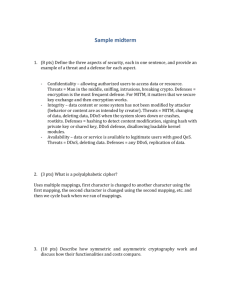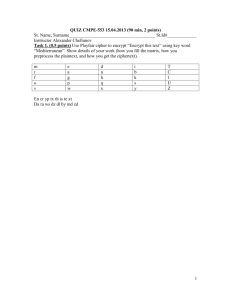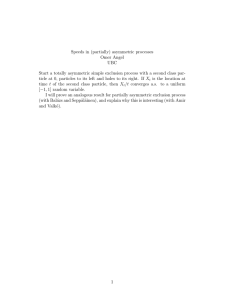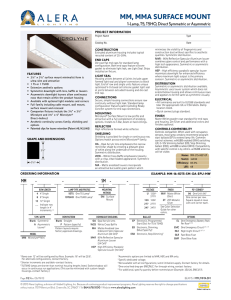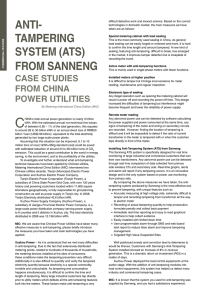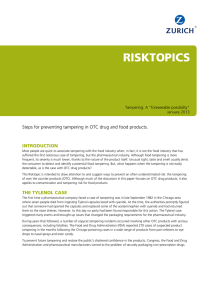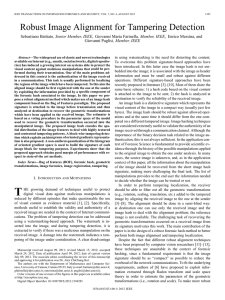Midterm Exam Review COMPSCI210 Recitation 5 Oct 2012 Vamsi Thummala
advertisement
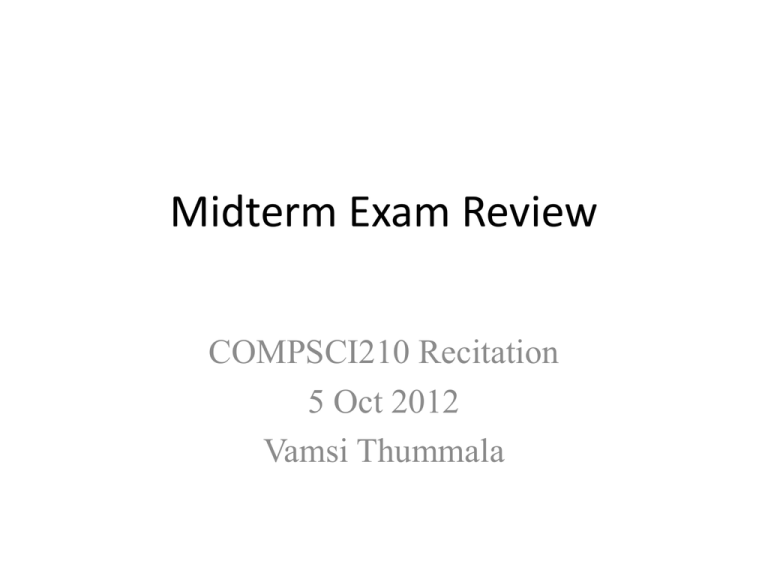
Midterm Exam Review
COMPSCI210 Recitation
5 Oct 2012
Vamsi Thummala
My biased view
• A bit challenging
– Tests your reading comprehension skills under
time pressure
• Thought provoking
– Not a brain dump test
• Opportunity for learning
– Just an another class
• Tests your confidence
– Not difficult to score but easy to get lost
Terminology so far ..
• Entity
– Principal, Identity,
Attribute, Label
•
•
•
•
•
Component
Context
Connector
Channel
Trusted computing
base
Process
Thread
Kernel
Address space
Files
Pipes
Sockets
Binder
Systems/Abstractions
• Traditional single node
– Unix
– Linux
• Mobile
– Android/Linux
• Web
– Chromium/Linux
• Network basics
– Client/Server
Security, an overview
We reduce it to three intertwined issues:
1. What program am I running?
– Can this program be trusted? Who says?
– Can I be sure that the program has not been tampered?
2 . Who am I talking to?
– Can this entity be trusted?
– Can I be sure the communication has not been tampered?
3. Should I approve this request? R(op, subject, object)
– Who is the requester? (subject)
– What program is speaking for the requester?
– Does the subject have the required permissions?
Elements of security
• Isolation/protection
– Sandboxes and boundaries prevent unchecked access.
• Integrity
– Fingerprint data to detect tampering.
– Encrypt data to prevent access or tampering.
• Authentication
– Identify a peer by proof that it possesses a secret.
• Identity and attributes
– Identities have credentials: names, tags, roles...
• Authorization == access control
– Guard checks credentials against an access policy.
Access Control
• Triplet
– {op, subject, object}
• Components run within contexts (isolated sandboxes).
• Each component/context is associated with an identity with
some attributes (subject).
• Components use system calls to interact across context
boundaries, or access shared objects.
• Each object has some access attributes.
• Principle of least privilege limits the damage a component
can do if it “goes rogue”.
Crypto primitives
Encrypt/Decrypt
Signing
Secure hashing
useful for
fingerprinting data
Use a shared secret key
(symmetric)
or
use a keypair
one public, one private
(asymmetric)
Cryptography for Busy People
• Standard crypto functions parameterized by keys.
– Fixed-width “random” value (length matters, e.g., 256-bit)
– Symmetric (DES: fast, requires shared key K1 = K2)
– Asymmetric (RSA: slow, uses two keys)
• “Believed to be computationally infeasible” to break
M
K1
Encrypt
E
M
Decrypt
D
K2
[Image: Landon Cox]
Two Flavors of “Signature”
• A digest encrypted with a private asymmetric key is
called a digital signature
– “Proves” that a particular identity sent the message.
• “Proves” the message has not been tampered.
• “Unforgeable”
– The sender cannot deny sending the message.
• “non-repudiable”
– Can be legally binding in the United States
• A digest encrypted with a shared symmetric key is called
a message authentication code (MAC).
• faster, but…
Nonce
• Verifies the freshness of a message
• Eavesdropping
– serverNonce
• Tampering
– clientNonce
